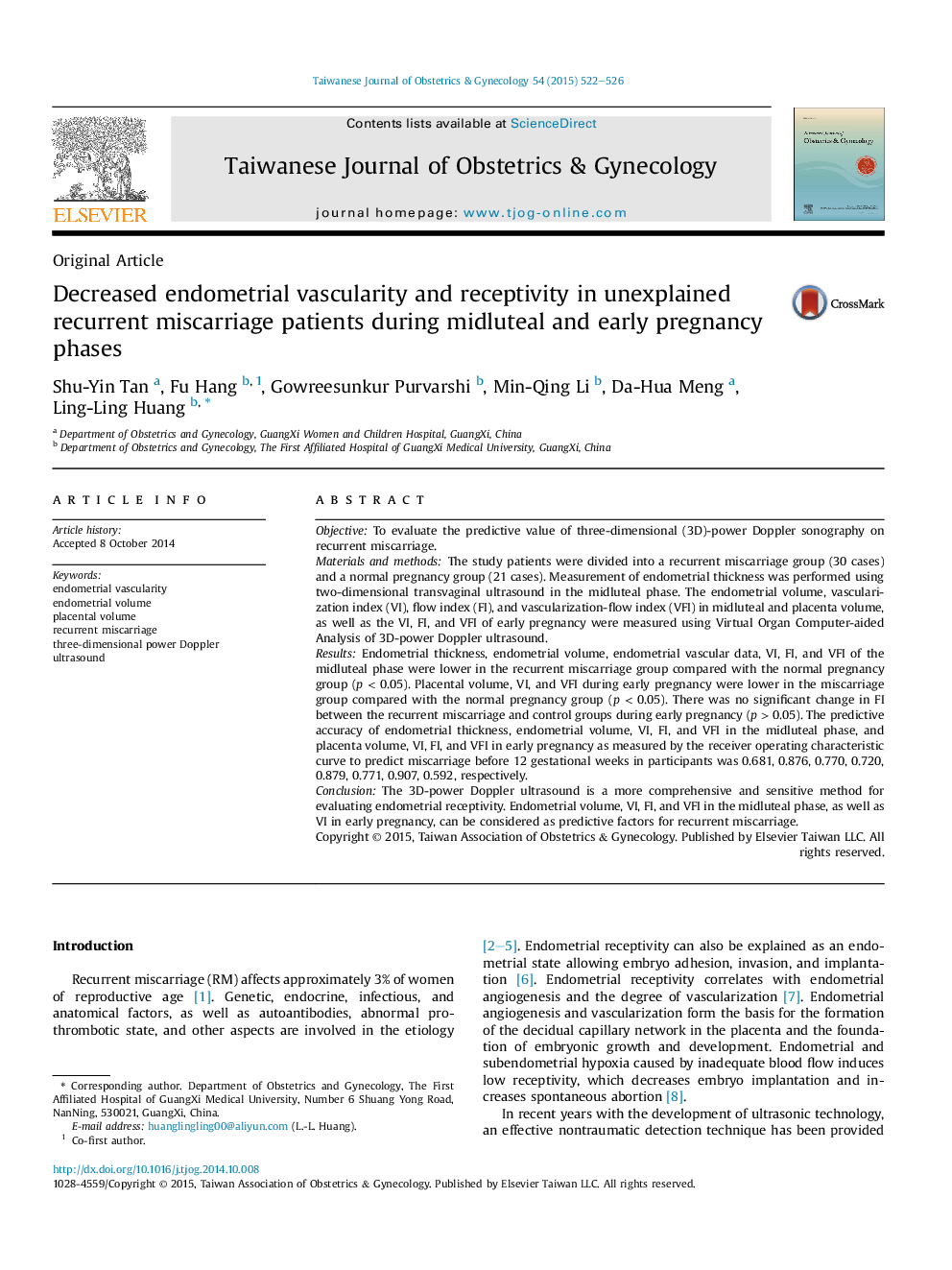| Article ID | Journal | Published Year | Pages | File Type |
|---|---|---|---|---|
| 3975471 | Taiwanese Journal of Obstetrics and Gynecology | 2015 | 5 Pages |
ObjectiveTo evaluate the predictive value of three-dimensional (3D)-power Doppler sonography on recurrent miscarriage.Materials and methodsThe study patients were divided into a recurrent miscarriage group (30 cases) and a normal pregnancy group (21 cases). Measurement of endometrial thickness was performed using two-dimensional transvaginal ultrasound in the midluteal phase. The endometrial volume, vascularization index (VI), flow index (FI), and vascularization-flow index (VFI) in midluteal and placenta volume, as well as the VI, FI, and VFI of early pregnancy were measured using Virtual Organ Computer-aided Analysis of 3D-power Doppler ultrasound.ResultsEndometrial thickness, endometrial volume, endometrial vascular data, VI, FI, and VFI of the midluteal phase were lower in the recurrent miscarriage group compared with the normal pregnancy group (p < 0.05). Placental volume, VI, and VFI during early pregnancy were lower in the miscarriage group compared with the normal pregnancy group (p < 0.05). There was no significant change in FI between the recurrent miscarriage and control groups during early pregnancy (p > 0.05). The predictive accuracy of endometrial thickness, endometrial volume, VI, FI, and VFI in the midluteal phase, and placenta volume, VI, FI, and VFI in early pregnancy as measured by the receiver operating characteristic curve to predict miscarriage before 12 gestational weeks in participants was 0.681, 0.876, 0.770, 0.720, 0.879, 0.771, 0.907, 0.592, respectively.ConclusionThe 3D-power Doppler ultrasound is a more comprehensive and sensitive method for evaluating endometrial receptivity. Endometrial volume, VI, FI, and VFI in the midluteal phase, as well as VI in early pregnancy, can be considered as predictive factors for recurrent miscarriage.
